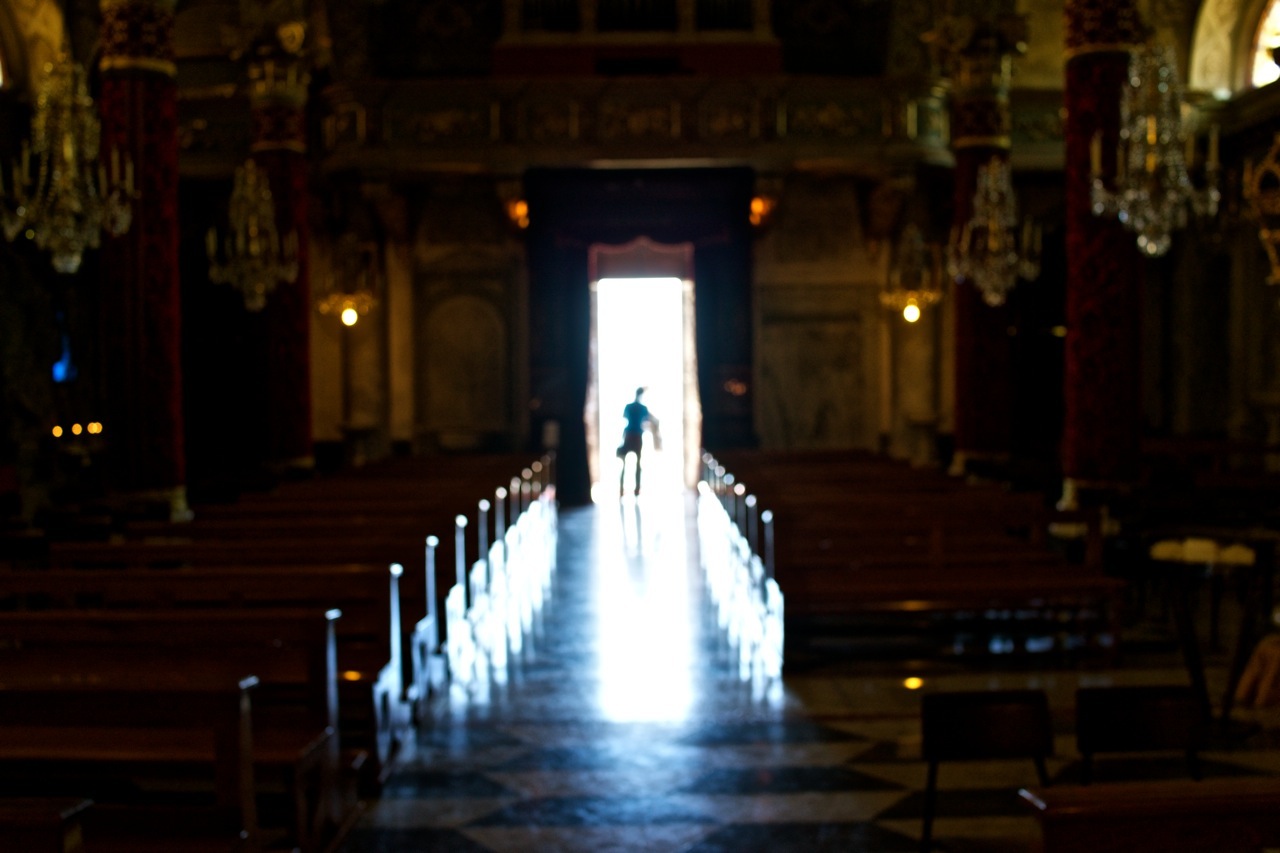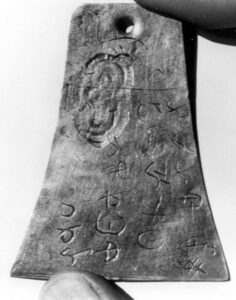A Compilation of the Evidence Against the LDS Church
Eric Nelson
Click to Download PDF of Entire 13-Essay Series
“The man who cannot listen to an argument which opposes his views either has a weak position or is a weak defender of it. No opinion that cannot stand discussion or criticism is worth holding. And it has been wisely said that the man who knows only half of any question is worse off than the man who knows nothing of it. He is not only one sided, but his partisanship soon turns him into an intolerant and a fanatic. In general it is true that nothing which cannot stand up under discussion and criticism is worth defending.”
– James E. Talmage –
(quoting “The Intolerant Spirit.” Editorial. Pittsburgh Leader. November 13, 1919.)
Table of Contents
- Background
- Suspicions and Concerns with BOA Translation Emerge
- BOA Papyri Rediscovered
- BOA Papyri Exposed as Ordinary Funerary Documents
- Analysis of Joseph Smith’s Translation of Facsimile 1
- Analysis of Joseph Smith’s Translation of Facsimile 2
- Analysis of Joseph Smith’s Translation of Facsimile 3
- BOA Espouses Discredited Views of Science
- BOA Utilizes King James Version Text
- BOA Anachronisms
- Church’s Essay Debunked
- Joseph Smith’s Potential Sources for Composing the BOA
- Additional BOA Information
- Conclusions
- Background
- Plates Revealed as Fraud
- Questions and Concerns
- Implications on Joseph Smith’s Role as Prophet and Seer
- BOM Translated with a Peep Stone
- Church Has Not Accurately Taught the BOM Translation Process
- Urim and Thummim Not Used in BOM Translation
- Gold Plates Not Used During BOM Translation
- Translation Timeline Raises Additional Concerns
- Translation Process Raises Troubling Questions
- DNA Evidence Disproves BOM Claims
- BOM Errors and Anachronisms
- No Archaeological Evidence Directly Supporting BOM
- BOM Contains KJV Text
- BOM Contains KJV Translation Errors
- Similarities with View of the Hebrews
- Similarities with The Late War
- Similarities with The First Book of Napoleon
- Early BOM Editions Teach Trinity
- BOM Conflicts with First Vision Account
- Implausibility of Jaredite Story
- Authorship and Divine Origin
- Joseph Smith’s Potential Sources for Composing the BOM
- At Least Nine First Vision Accounts
- Summary of First Vision Accounts
- Differences Among the Accounts
- Joseph Smith Never Mentioned Vision Unil Years Later
- Joseph Smith Enhanced First Vision Account to Stave-Off Leadership Crisis
- Joseph Smith Taught Trinity Following First Vision
- Overview
- Background
- Specific Problems with Priesthood Restoration Account
- Articles Discussing Unsupported Story of Priesthood Restoration Account
- Background
- Joseph Smith Practiced Polygamy
- Joseph Smith Practiced Polyandry
- Informational Chart of Joseph Smith’s Documented Wives
- Evidence of Joseph Smith’s Adultery
- Joseph Smith Practiced Polygamy Prior to Alleged Revelation
- Early Polygamist Unions Not Sanctioned Under God’s Laws
- Polygamy Condemned by Revelation
- Joseph Smith Was Coercive in his Marriage Proposals
- Helen Mar Kimball (Joseph Smith’s 14-Year-Old Wife)
- Joseph Smith had Sexual Relationship with Wives
- Joseph Smith Repeatedly Lied About Polygamy
- Joseph Smith Married Women Without Emma’s Knowledge
- Bogus Justifications for Polygamy
- Joseph Smith Violated Revealed Rules Governing Polygamy
- Evidence of Joseph’s Immoral Proposal to Jane Law
- Overview
- Magical Worldview
- Analysis of Three Witnesses
- Analysis of Eight Witnesses
- Close Relationship Between BOM Witnesses and Joseph Smith
- Witnesses Saw Gold Plates Via “Second Sight”
- No Documents of Witnesses’ Signatures
- James Strang and the Voree Plates Witnesses
- BOM Witnesses and Joseph Smith’s Family Sustained Strang as Prophet
- Problems with Church’s Reliance on Witnesses
- Conclusion
- Overview
- Adam-God Theology
- Blood Atonement
- Polygamy
- Race and the Priesthood
- Doctrine Versus Opinion
- Introduction
- Similarities Between Temple Ceremony and Freemasonry Rituals
- Masonry Developed During the Dark Ages
- Temple Changes
- Purpose of Temples
- Conclusion
- Death Prior to the Fall
- First Humans
- Jaredite Story
- Noah’s Ark
- Other Discredited Scriptural Claims
- Bizarre Scriptural Claims and Beliefs
Testimony, Truth, and the Holy Ghost
- Background
- Similar Experiences in Other Religions
- Spiritual Feelings are Unreliable
- Feelings Change With “New” Information
- Truth Versus Utility
Introduction
I hope those of you who read this document do not get the wrong idea: I am not leaving the Church out of anger, sin, or laziness. I am not leaving due to anti-Mormon literature or to pursue different lifestyle choices. And I am not leaving in hopes of bringing others with me. Rather, I am leaving for only one simple reason: I no longer believe fundamental Church doctrines.
I realize my decision to leave the Church will be both disappointing and painful to my family and friends. In drafting this document, it is not my intent to cause additional heartache, particularly in light of all that the Church has given me. The Church has molded me into a better individual, husband, and father. It has provided me with life-changing experiences and life-long friends. Walking away from the only faith I have ever known feels a lot like leaving behind a loyal friend.
My crisis of faith began in 2008. At the time, I was serving as Branch President. In so doing, I met and counseled with many individuals who were struggling with their testimony. During these counseling sessions, several members raised difficult questions about seemingly obscure doctrines and certain aspects of church history. Initially, I dismissed these concerns and tried to shift their focus to better-understood doctrines and principles. About that same time, I invited a friend and co-worker to take the missionary discussions. He agreed to do so, but supplemented the discussions with his own Internet research, which he then conveyed to me through several conversations. In so doing, my friend raised some of the same concerns that I had previously discussed with various branch members. Once again, I dismissed these concerns as the product of false, anti-Mormon literature.
At the conclusion of these conversations, I felt somewhat dissatisfied with the way I handled the various questions and concerns. As a Branch President, I felt an obligation to have answers and insights to gospel questions. I therefore decided to delve into a research project in order to squarely address these unresolved issues.
In the days and weeks that followed, I studied a variety of LDS sources fully-intending to find answers to my questions. To my surprise, however, I discovered that the concerns at issue were both factual and legitimate. Although I was secure in my testimony, I was shaken by the fact that I had never heard of these issues. Occasionally, I began to wonder what else I didn’t know about the church. For the first time in my life, I began having small doubts of my own.
Over the next several months, I put my doubts aside and hoped they would simply go away. Or, at the very least, I thought I could diminish the doubts with increased faith and church service. To my dismay, my doubts were unrelenting.
As the months morphed into years, I fruitlessly searched a variety of LDS-friendly sources looking for answers. Instead, my research both reinforced my concerns and created new ones. In turn, I began feeling increasingly uncomfortable at church. Sacrament meeting talks about Joseph Smith and the early church no longer rang true. I frequently felt inadequate in my calling and fraudulent during priesthood blessings. I felt trapped between what I wanted to believe and what I was discovering about my faith.
I tried to cobble together a set of beliefs that could somehow reconcile my faith in the church with the many problematic aspects of Joseph Smith’s life and church doctrine. But every time I settled on a position, I discovered new cracks in the foundation.
My crisis of faith initially caught me off guard and, in turn, my emotions ran the gamut. I felt loneliness, frustration, something comparable to betrayal, sadness, confusion, and hopelessness. But I have found peace in my chosen path.
I am now coming to understand that my story is not unique. In recent years, numerous news outlets have detailed the so-called Mormon exodus. A recent Reuters article, Mormonism Besieged by the Modern Age, quotes Elder Marlin K. Jensen, then-Church Historian and General Authority, as saying: “Maybe since Kirtland, we’ve never had a period of — I’ll call it apostasy, like we’re having now.” The article speculates that this collective crisis may be attributable to an Internet-age where the Church’s warts are subject to examination. Recent research (including a 3,000 member survey) indicates that the crisis may also be attributable to the fact that the Church does not adequately brace its members for what they will find upon engaging in a thorough examination.
Unfortunately, our discussions at church are often an inch deep and a mile wide. We seem to yearn for a simple religion. We never learn in church, for example, the differences in the various First Vision accounts. We never learn that the Book of Abraham papyri were discovered and analyzed by Egyptologists and ultimately translated much differently than by Joseph Smith. We do not talk about the revisions to the Book of Mormon, the details of Joseph Smith’s polygamist marriages, or the DNA studies implicating the Book of Mormon. Questions about such topics are frowned upon because they are uncomfortable. Moreover, many members do not understand the force of this “new” information. Not knowing how to respond, they react defensively. They are inclined to dismiss much of the evidence as anti-Mormon. In turn, doubters are often instructed to return to the familiar formula: scriptures, prayer, and church attendance.
This approach has isolated many of us from the rest of the Church and ultimately proven unhelpful. Part of the problem is that church members too often believe that faith should not be questioned or examined unless the premise and endgame remains constant: the Church is true. I believe quite the opposite: an unwillingness to subject one’s beliefs to rigorous scrutiny is, inherently, a weakness of faith.
My acorns of inquiry and doubt did not mature into oak trees of understanding through prayer and scripture study. On the contrary, my doubts festered and continually undermined much of what I wanted to believe until they eventually became debilitating. Nonetheless, for several years I continued exercising faith in the Church because I hoped it was true and I didn’t think there was any way to definitively prove or disprove its truthfulness. But as I carefully studied church history and doctrine, it became apparent that certain LDS teachings and beliefs are objectively false. As these issues added up, I found it increasingly difficult to trust those aspects of the Church that must be accepted by faith alone. A burnt child dreads the fire, so to speak.
My decision to leave the Church is the product of a five-and-a-half-year journey that included countless hours of research, study, and prayer. And now that I have arrived at this point, I feel compelled to provide an explanation for my decision. The following essays analyze the evidence undermining both the Church and my once flourishing testimony. I have compiled the following information from many sources (most of which would be considered friendly to the Church) and, in many instances, copied without attribution. [1]
I realize that many of my loved ones will never agree with my decision to leave the Church, but I hope those who read through these essays can come to appreciate the depth of my doubts, the sincerity of my search, and my rationale in parting from a faith that has, despite my heartfelt efforts, proven elusive.
- I initially discovered a great deal of the information contained in this document while reading books, essays, and articles written by LDS authors (including Richard Bushman, Terryl Givens, B.H. Roberts, Todd Compton, Michael Ash, etc.) or authors who are viewed credibly within the LDS community (including Grant Palmer, Simon Southerton, Charles Larson, etc.). However, I ultimately relied heavily on Jeremy Runnels’ Letter to a CES Director and mormonthink.com during the drafting process, as these sources (1) were available online, (2) quoted many of the LDS sources I had read previously, and (3) contained information that I was largely able to verify with LDS-friendly sources. In so doing, I essentially utilized Runnels’ letter/outline as the foundation for this document; I modified much of the wording and some of the issues, discarded aspects that did not cause me concern, and supplemented and added information relating to aspects that I deemed most problematic. ↑





Any chance I could get a PDF file with this?
Vickie, I have embedded a link where you can download a PDF of my essays in a single document at the top of this page underneath the title. Please let me know if you need anything else.
Dear Eric,
Reading your introduction reminded me of my journey out of Mormonism. Like you, I was also in a position of important leadership back in 1970 when I first began to have serious doubts. I was the bishop for 3 years before being released (by request). The trouble was, the Internet and its common use, was not in existence, so for years I struggled — even became a branch president later in life for another 3 years! For so long I prayed, fasted read widely as well as stayed faithful, but doubts remained and gradually became strong enough to stand alone and openly question authority. That was when ‘pride’ was so often the label attached to me, for daring to have an opinion contrary to the prophets. I wrote a book about it, which pretty much summed-up my emotional crisis and reasons for leaving. Thank you for such a treasure of information, I’m sure it will be one of my favourite resources — particularly to help others see the truth.
Thank you so very much for the kind words, Robert.
This is so nicely written Eric. I really like how you have expressed yourself and described your journey.
I have had the opportunity to rub shoulders and sometimes break bread with some of the best people in the world who have gone through similar journeys. Your journey sounds very similar to many of them. You and they were very sincere members of the church just trying to do your best and live lives of integrity.
I am often saddened in my mormon circles when I hear disparaging comments about those who “lose their faith”. It is really hard for traditional mormons to really wrap their heads around that sincere, honest people can come to a position on faith that is diametrically opposed to theirs. Hence, they feel the need to demonize the others.
You are one more example that this tendency amongst mormons to demonize the others is not justified.
Thank you for sharing your story and wonderful research.
Thank you so much for the kind words, James. I sincerely appreciate your feedback.
Eric, any way I could get a PDF version of all the essays in one place with a different title? I would love to read this with some close family members, but the phrase “a compilation of evidence against the LDS Church” will scare them away.
I understand fully that your title is 100% accurate as this is not a compilation of evidences against and for the Church, so I would limit distribution to my family members only in order to avoid misleading anyone else who reads it and calls you out for being one sided.
Hello James, thanks for the comment. I am happy to email you a PDF version of the essays with a different title. Just let me know how I can contact you via email and I will get you a copy ASAP.
wow you hit the nail on the head in alot of ways for me in the first paragraph —-“I hope those of you who read this document do not get the wrong idea: I am not leaving the Church out of anger, sin, or laziness. I am not leaving due to anti-Mormon literature or to pursue different lifestyle choices. And I am not leaving in hopes of bringing others with me. Rather, I am leaving for only one simple reason: I no longer believe fundamental Church doctrines.”.
When i finally let “friends” in the church know i was leaving they listed off several of those reasons. I was accused of being too easily offended and my head was filled with anti mormon progaganda. When i listed in a very long email some of the doctrinal and historical reasons for leaving the church my friends refused to address them. I was aware of the issues with the church for years but felt i would stay to keep the peace. It was too troubling for my soul to pretend to believe and after several years of researching these facts i finally left.
I always felt that it was telling, that the church did not go public with the practice of polygamy until AFTER Oliver Cowdery had died of TB. He was excommunicated in 1838. One of the counts against him was accusing Joseph of adultery in regards to Joseph’s earliest plural couplings.
The point I’m hinting at, is Oliver is the only supposed witness to the sealing keys. D&C 132 intertwines sealing with polygamy. Sealings were introduced secretly with spiritual wifery in 1841 to select members, 5 years after the visitation at the Kirtland Temple, and after Oliver was excommunicated from the church and threatened with “extermination”.
By keeping the revelation secret, Cowdery was denied the opportunity to confirm or deny the revelation.
Why are these very concise cases for investigating “truths” always ignored by those who promote these “truths”?
Thanks for the comment. You make a good point. In my experience, many people only search out or embrace truths that are compatible with their pre-existing beliefs. Truths that undermine these beliefs are often ignored or dismissed as “anti-Mormon” without a fair or thorough consideration of their accuracy and substance.
I find it interesting that you and I both felt it critical to point out that offense/anger, sin, and laziness are not the cause.
It is such a pervasive assumption among the members and leaders.
I included the exact same thing in the letter to my family.
This is a great Talmage quote — I hadn’t heard it before. Do you know where it was said, Eric?
Agreed, this is a great quote. Here is the cite: James Talmage, Improvement Era, January 1920, p. 204.
Wes, I apologize, but after reading Talmage’s Improvement Era article, I discovered that Talmage was quoting a newspaper editorial, which I have cited in the text above.